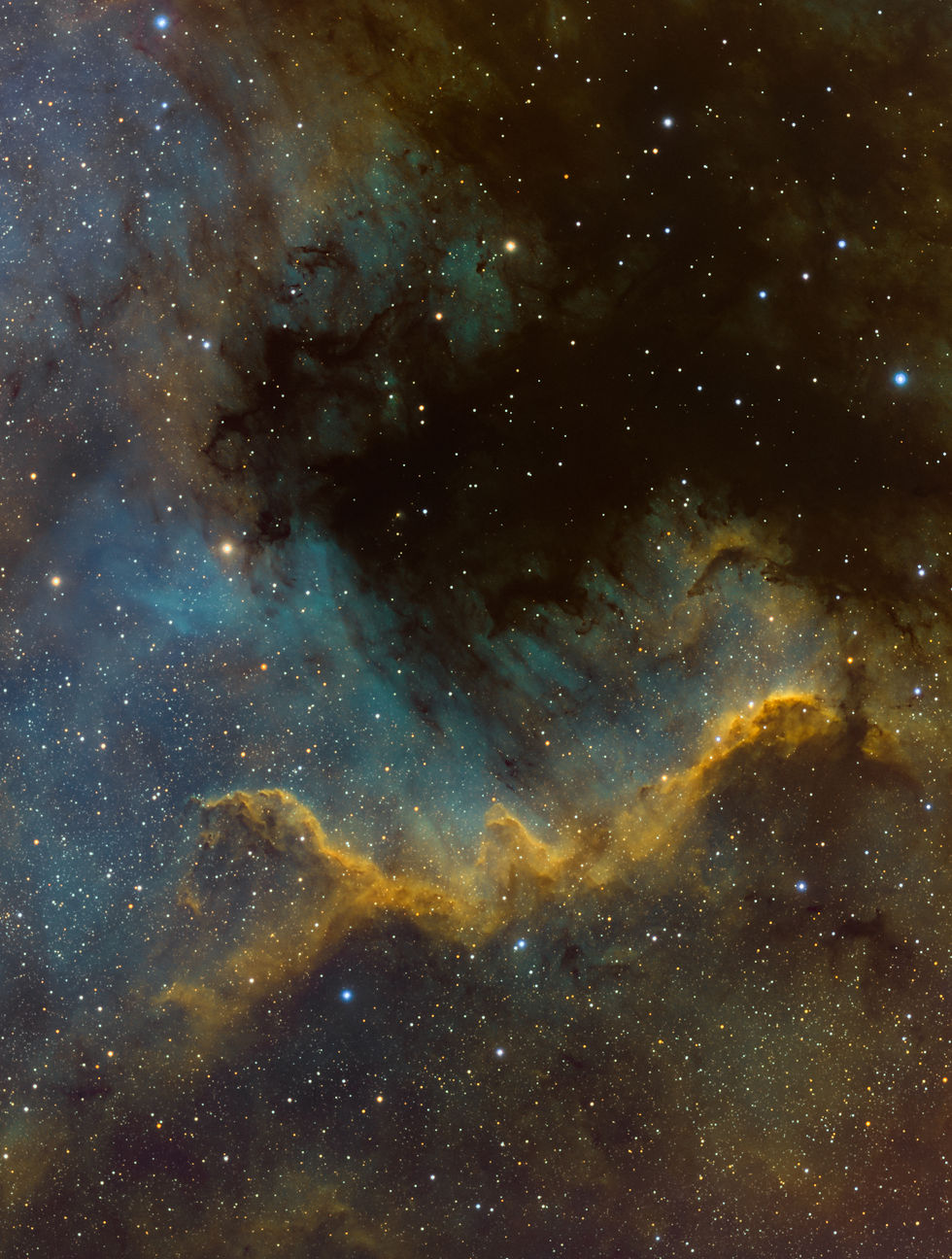Cygnus Wall
- Ville Puoskari

- Apr 9, 2021
- 1 min read
This spectacular H II region is part of a larger nebulosity that consists of North America Nebula and Pelican nebula. In 1890 German astrophotographer Max Wolf noticed this characteristic shape on his photograph and dubbed it the North America Nebula. More specifically the region in my photo is nicknamed as the Cygnus Wall, as the name suggests this object is in the constellation of Cygnus, 2600 light-years away from Earth.
Edwin Hubble proposed that this nebulosity was illuminated by Deneb. Soon it became apparent that it is not hot enough nor is it near enough center of the apparent radiation source. In 1958 George Herbig found that the ionizing star could lie behind the central dark cloud L935. In 2004 European astronomers Fernando Comerón and Anna Pasquali searched for the ionizing star behind this dark nebulosity using infrared observations made with Calar Alto Observatory's 2.2 meter telescope. They found a star that fullfilled all the criteria and it is almost certainly the ionizing star for North America Nebula and Pelican Nebula. This star lies just off the "Florida coast" and it has been nicknamed as Bajamar Star (Islas De Bajamar, meaning low-tide-islands in Spanish). The light of this star is dimmed by a whopping 9.6 magnitudes by the dark nebulosity around it, if it was outside of this dust it would shine almost as brightly as Albireo.




Comments